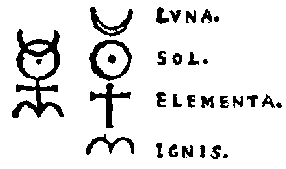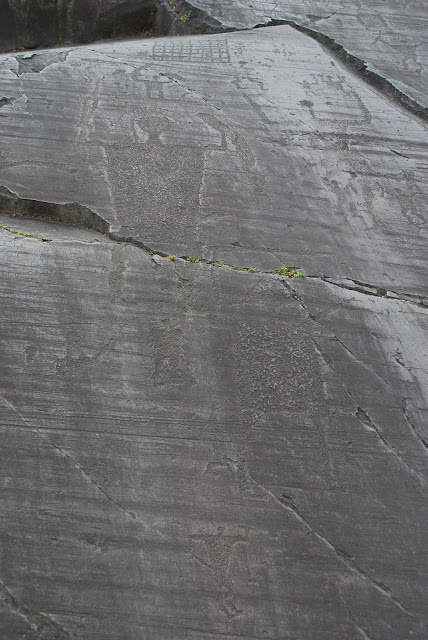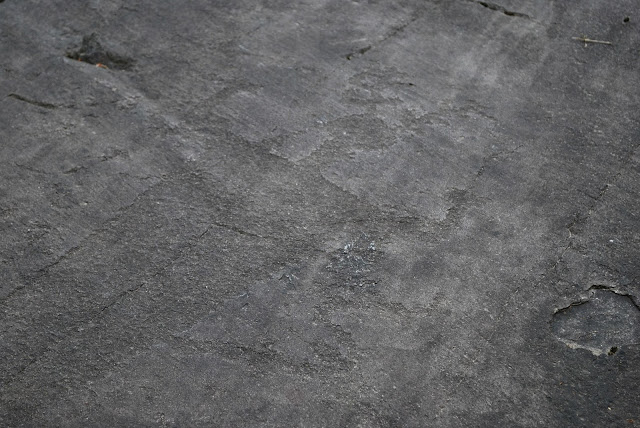This is one of my favourite symbols. I’ve carved Dee's Monad a number of times over the past three years. I’ve noticed that there are variations of this symbol online but this is the original form. The Monad is a symbol of unification. Separate parts yield a whole. In the diagram you can see the individual elements and their basic significance. However there is more to this symbol and I thought I’d share my research in this post.
In-keeping with the holistic imagery of this sigil we need to take a look at its creator, John Dee; an important figure in 17th c. English history, John Dee was born in England in 1527, and died late 1608. Through the course of his life he was a mathematician, an astrologer, astronomer and occultist. As a young man he went abroad to learn many of these arts. Returning from studies in Europe Dee was taken into the English aristocratic court, where he became an advisor to Elizabeth I. He advocated Imperial expansion of England and played a vital role in its inception.
In the final decades of his life Dee dedicated himself to alchemical/hermetic philosophy, searching for an understanding of the divine forms he was certain underpinned reality. These transcendent principles he named “pure verities.” Dee saw no difference between his love of mathematics and science or his hermetic/occult dealings; to Dee they were means to the same end. In his quest for knowledge he gathered hundreds of books and manuscripts. It was said that Dee possessed the largest library in England at the time.
Dee is also renowned for his dealings with ‘angels’. It could be that these ventures into angelic converse were instigated because he felt a sense of failure in life. Dee hadn't gained the knowledge and “pure verities” he sought via conventional methods. He was also losing favour with the Queen at court. So Dee took to scrying and ‘contacting’ divine beings. In 1582 Dee took one Edward Kelley into his service. Kelley has been figured by some scholars as a charlatan, however he was the medium by which Dee conversed with angels. Together they meticulously detailed their dealings, completing several books - some in the divine language which they called Enochian**.
The following year, prompted by his angels, Dee left the court of Elizabeth I. Wishing to keep his head firmly on his shoulders* Dee and Kelley wound up travelling through Europe, meeting with emperors and kings (all the while their spiritual conferences continued). Eventually Kelley and Dee parted ways after the angels told them that Kelley had to sleep with Dee's young wife. Kelley went to work for the emperor of the Bohemian empire, Rudolph II, in Prague, creating alchemical gold (did he or didn't he? Was Kelley a charlatan after all? A medium through whom Dee's subconscious was extricated in the form of angelic discourse?). Kelley, rising to fame across Europe because of his skills fell from grace. He was imprisoned and was slain whilst trying to escape. Dee returned to England and eventually died in poverty at his home, Mortlake, at the grand old age of 82.
One of the books he wrote during his long lifetime was the Monas Hieroglyphica, which is an explanation of the monad symbol. As previously seen Dee divided the monad into separate parts, and as we have also seen these parts can be divided into lunar, solar, element and fire, as well as lunar, solar, earth and spirit. However each part has other significance, as Dee sought to devise an all-embracing symbol - The monad.
One thing to bear in mind here is that like the Pythagoreans Dee believed that numbers represented the sacred and the divine truth of the construction of the universe. Therefore sequences of numbers served as proof of the wholeness and sacredness of his hieroglyph. To Dee this symbol itself contained great power and mystery.
One thing to bear in mind here is that like the Pythagoreans Dee believed that numbers represented the sacred and the divine truth of the construction of the universe. Therefore sequences of numbers served as proof of the wholeness and sacredness of his hieroglyph. To Dee this symbol itself contained great power and mystery.
The Crown -
The reason the moon features as taurus-like horns is that they are also cornucopia; the bounty of the fertile moon (remember that much cultivation was tied with astrological thought - and still is in modern day Italy). The moon phases especially are seen as vital to the growth of plants.
The Head -
At the point (monad) all things come into being. In geometry neither a line nor a circle can be created without it. However due to the flawed pre-Galilean astronomy of the time the sun circled the earth. We know this to be wrong now, but Dee aligned the then belief with his symbol. Therefore the circle represented the sun's gyration around the central earth point. Entwined in the circle was of course the moon, also circling the earth.
The Body -
Represents the mystery of the elements, four stems that are also joined at their fulcrum. The cross also serves a quaternary function, upon which the theorem adds Pythagorean substance in the form of the Tetractys (a formula or sequence of numbers in triangular form that added up to the mystical number 10). Mathematically and numerically the cross was a symbol of perfection.
The Feet -
As Aries Dee introduced a fire symbol, relating that in the alchemical practice of his symbol fire was a necessary component,
The entire figure could also be recognised by those versed in hermetic law as an alchemical process, complete in itself. Hermetically Dee summed his monad thus: The Sun and the Moon of this Monad desire that the Elements in which the tenth proportion will flower, shall be separated, and this is done by the application of Fire.
John Dee further involved the monad with astrological layers, proving that it was also formed from combinations of planetary symbols: Mercury, Venus, Mars, Jupiter, Saturn and elements of aries, sol and the moon. It was also a conjunction of Aries and Taurus.
The Monas Hieroglyphicus is a dense and unfortunately obscure account of the symbol, however much one delves into numerological formulae, comparisons of the alchemic art and the symbol, along with geometric reasoning, interpretation et al. Other books of Dee's that explored the monad further have been lost.
For those of you who wish to explore deeper I have provided a link by which you can access the Monas.
Masters of Darkness - a BBC documentary about JD, featuring Alan Moore.
 |
| John Dee |
*
Some believe that Dee was still working for Elizabeth and as he wandered Europe - he was in effect a spy.
**
Through their discourse Dee 'uncovered' a complete magical system with it's own language. He detailed everything in a scientific manner.



































